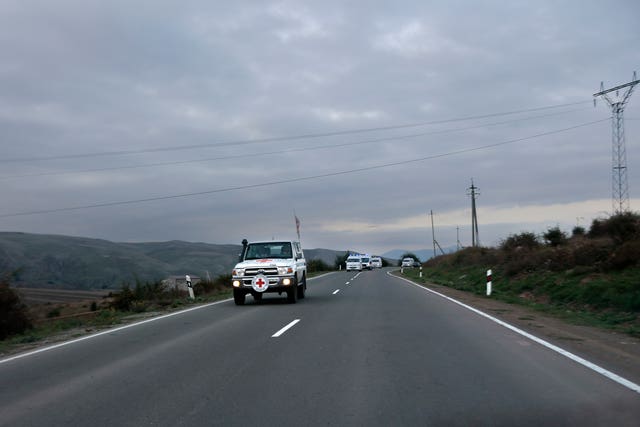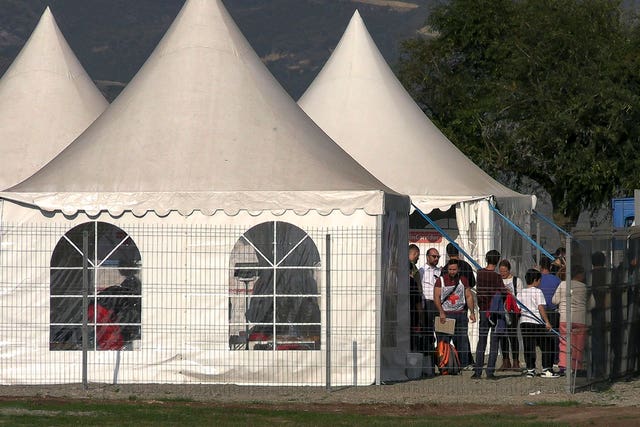The first refugees from Nagorno-Karabakh have arrived in Armenia, local officials say.
More are expected to follow after a 10-month blockade and a military offensive this month that resulted in Azerbaijan reclaiming full control of the breakaway region.
Thousands of people were evacuated from cities and villages affected by the latest fighting and taken to a Russian peacekeepers’ camp in Nagorno-Karabakh.

A total of 377 people had arrived in Armenia from the region as of Sunday night, Armenian authorities reported.
Ethnic Armenian separatist authorities in Nagorno-Karabakh also announced that the Russian peacekeepers would accompany anyone who wanted to leave the region and go to Armenia.
At the same time, two dozen ambulances carried 23 people who sustained severe wounds during the two days of fighting that killed and injured scores of people out of Nagorno-Karabakh to Armenia, the country’s Health Ministry said.
Nagorno-Karabakh is located in Azerbaijan and came under the control of ethnic Armenian forces, backed by the Armenian military, in separatist fighting that ended in 1994. During a six-week war in 2020, Azerbaijan took back parts of Nagorno-Karabakh along with territory surrounding the region that Armenian forces had claimed during the earlier conflict.
A Russia-brokered armistice ended the war, and a contingent of about 2,000 Russian peacekeepers was sent to the region to monitor it. Parts of Nagorno-Karabakh that were not retaken by Azerbaijan remained under the control of the separatist authorities.

In December, Azerbaijan imposed a blockade of the only road connecting Nagorno-Karabakh with Armenia, alleging that the Armenian government was using the road for mineral extraction and illicit weapons shipments to the province’s separatist forces.
Armenia charged that the closure denied basic food and fuel supplies to Nagorno-Karabakh’s approximately 120,000 people. Azerbaijan rejected the accusation, arguing the region could receive supplies through the Azerbaijani city of Aghdam – a solution long resisted by Nagorno-Karabakh authorities, who called it a strategy for Azerbaijan to gain control of the region.
On Tuesday, Azerbaijan launched heavy artillery fire against ethnic Armenian forces in Nagorno-Karabakh, who conceded to demands to lay down their arms that next day.
Nagorno-Karabakh’s final status remains an open question, however, and is at the centre of talks between the sides that began on Thursday in the Azerbaijani city of Yevlakh.
As part of a ceasefire agreement reached last week, the separatist forces in Nagorno-Karabakh started surrendering tanks, air defence systems and other weapons to the Azerbaijani army. As of Sunday, the process of surrendering arms was still under way, the Azerbaijani military said.
Azerbaijan’s Interior Ministry said on Sunday that disarmed and demobilised Armenian troops would be allowed to leave the region and go to Armenia.
Armenian Prime Minister Nikol Pashinyan said in an address to the nation on Sunday that his government was working “with international partners to form international mechanisms to ensure the rights and security of the Armenians of Nagorno-Karabakh, but if these efforts do not produce concrete results, the government will welcome our sisters and brothers of Nagorno-Karabakh in the Republic of Armenia with all the care.”




Comments: Our rules
We want our comments to be a lively and valuable part of our community - a place where readers can debate and engage with the most important local issues. The ability to comment on our stories is a privilege, not a right, however, and that privilege may be withdrawn if it is abused or misused.
Please report any comments that break our rules.
Read the rules here